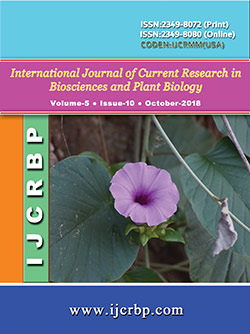 |
Online ISSN : 2349-8080 Issues : 12 per year Publisher : Excellent Publishers Email : editorinchiefijcrbp@gmail.com |
Exophytic fungus diversity plays an important role in controlling pathogens that cause diseases, especially sugar-apple fruit rot. The greater the diversity, the more stable it is in the ecosystem, and the more opportunities that inhibit pathogens. The results showed that the exophytic fungi found in leaves, fruit and twigs were Aspergillus sp. A. niger, Fusarium sp., Mycelia sterilia, Neurospora sp., and Rhizopus sp. The diversity index of exophytic fungi was 2.374 with a dominance index of 0.8667. It indicates that the condition of the community structure is more stable with good categories. The dominance index approaches 1 means that there was a dominating fungus, namely A. niger fungus as much as 18 × 103 cfu. The inhibitory effect of exophytic fungi on Lasiodiplodia theobromae in vitro was found to be lower in Aspergillus sp. amounting to 65.68 ± 0.82 and it was higher in Rhizopus sp. amounting to 82.92 ± 0.50%.
